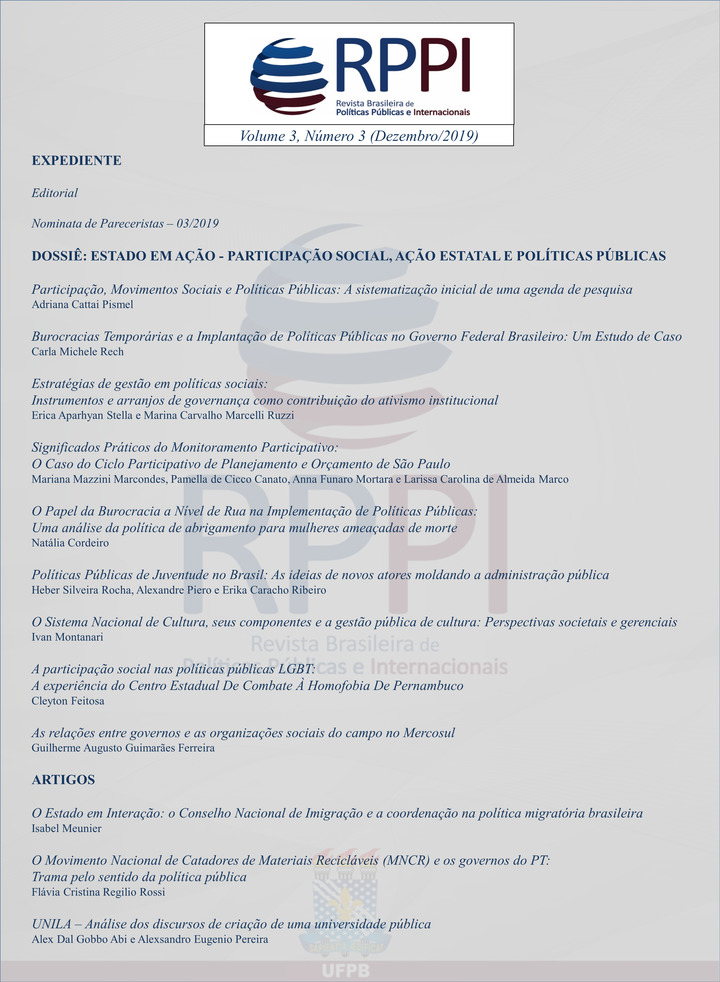UNILA – Análise dos discursos de criação de uma universidade pública
DOI:
https://doi.org/10.22478/ufpb.2525-5584.2019v4n3.48600Abstract
Used to analyze periods of stability and changes in the process of formulating the government agenda, this paper addresses the Punctuated Equilibrium Model, translated into Portuguese as a Modelo do Equilíbrio Pontuado, to investigate the process of formation and creation of the Federal University of Latin American Integration American - UNILA. The objective is to analyze the main discourses in the promotion of Unila as a public policy that resulted in the implementation of a public university focused on integration in the Triple Border region. An idea maintained until then only in the ideas of Latin American thought, which claimed an educational institution for the region and that was met, thanks to the efforts of the agents involved in the decision-making process. In this sense, when analyzing the discouses, it can be seen that they were essential to instrumentalize the construction of a consensus and promotion of public policy.
Downloads
Downloads
Published
Issue
Section
License
Autores que publicam nesta revista concordam com os seguintes termos:- Autores mantém os direitos autorais e concedem à revista o direito de primeira publicação, com o trabalho simultaneamente licenciado sob a Licença Creative Commons Attribution que permite o compartilhamento do trabalho com reconhecimento da autoria e publicação inicial nesta revista.
- Autores têm autorização para assumir contratos adicionais separadamente, para distribuição não-exclusiva da versão do trabalho publicada nesta revista (ex.: publicar em repositório institucional ou como capítulo de livro), com reconhecimento de autoria e publicação inicial nesta revista.
- Autores têm permissão e são estimulados a publicar e distribuir seu trabalho online (ex.: em repositórios institucionais ou na sua página pessoal) a qualquer ponto antes ou durante o processo editorial, já que isso pode gerar alterações produtivas, bem como aumentar o impacto e a citação do trabalho publicado (Veja O Efeito do Acesso Livre).




_.jpg)






.png)


.jpg)
_.png)
